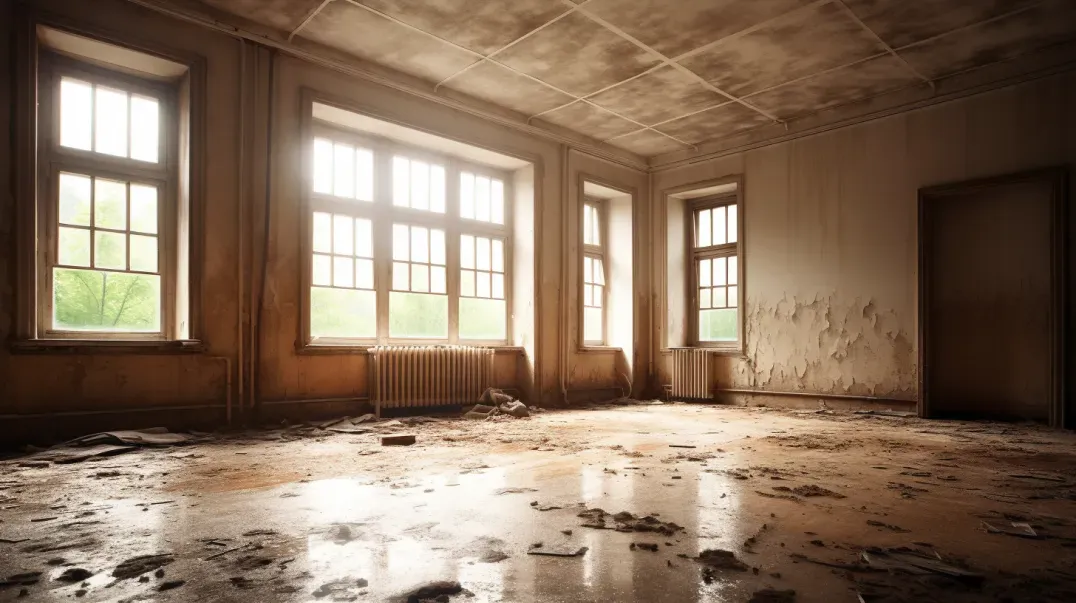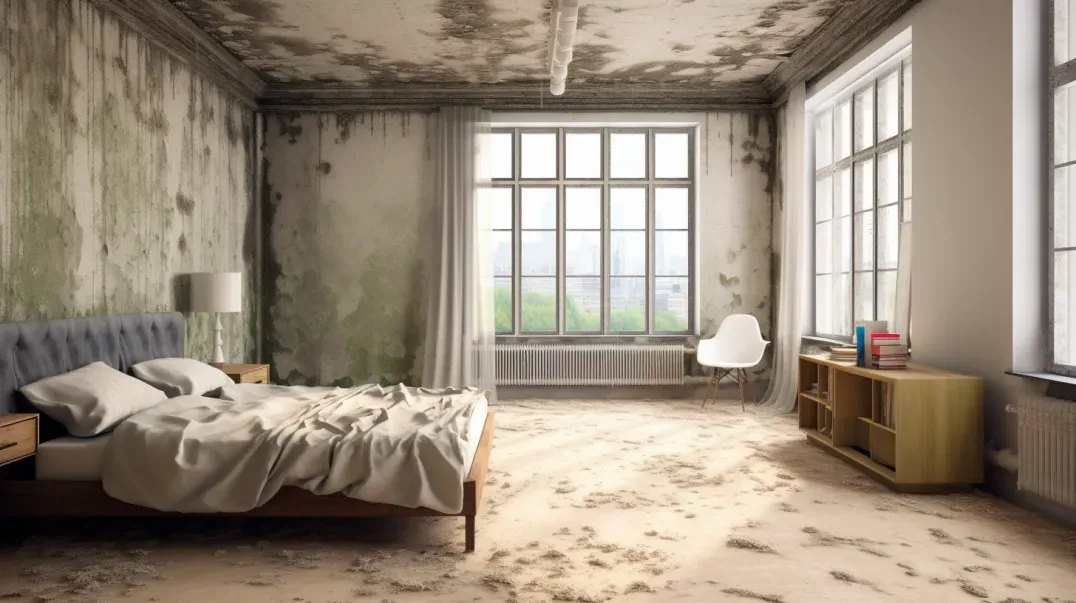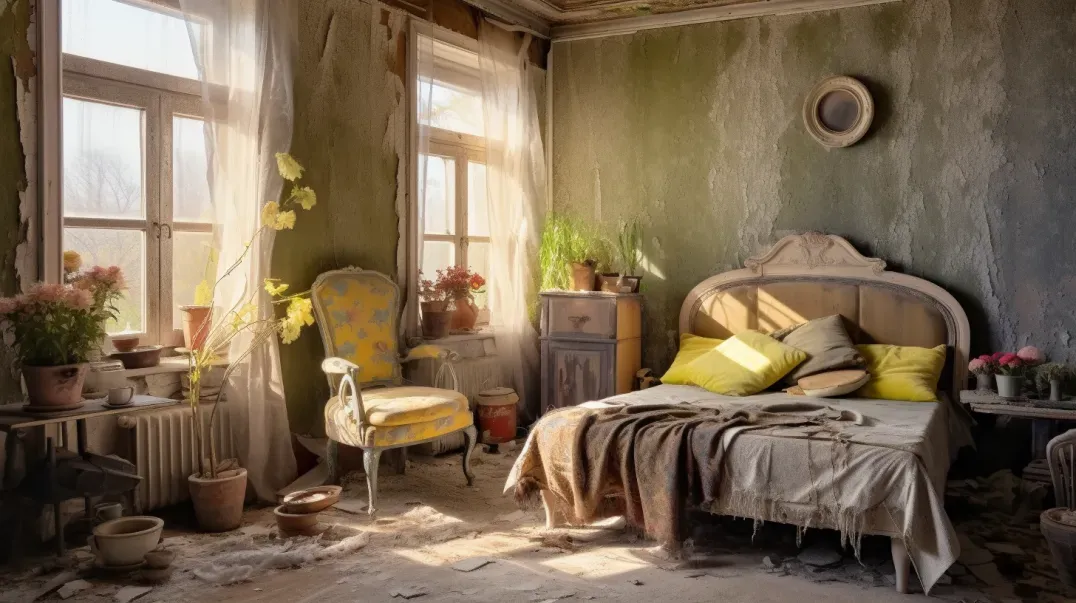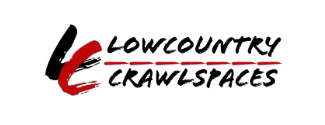Mold Prevention for Renters: What You Need to Know
Mold in rental properties is a silent intruder, often unnoticed until it becomes a significant health hazard and a complex challenge for renters. The presence of mold not only poses serious health risks, ranging from allergic reactions to respiratory issues, but it also brings to light the intricate dynamics of tenant-landlord relationships and the legal landscape surrounding rental agreements. This blog aims to shed light on the multifaceted challenges renters face when dealing with mold in their homes. From understanding the health implications of mold exposure to navigating the legal rights and responsibilities of tenants and landlords, we delve into the essential knowledge and strategies renters need to effectively address and mitigate this pervasive issue. Our goal is to empower renters with the information and tools necessary to ensure their homes are safe, healthy, and free from the detrimental impacts of mold. Join us as we explore the depths of this issue, offering expert insights, practical advice, and supportive guidance to navigate the murky waters of mold in rental properties.
Understanding Mold in Rental Properties
Mold in rental properties is more than just an unsightly nuisance; it's a pervasive issue that can have serious implications for tenants' health and well-being. Understanding the nature of mold, its common causes, and the potential health risks it poses is crucial for renters looking to maintain a safe and healthy living environment. This section delves into the typical sources of mold in rental units and the health concerns associated with mold exposure, providing renters with the knowledge needed to identify and address this issue effectively.
Common Causes of Mold in Rentals
Mold thrives in moist, damp environments, and rental properties can offer several hidden havens for mold growth. Identifying the common sources of mold is the first step in preventing its spread. Here are the typical culprits behind mold in rental units:
- Leaks: Water leaks from roofs, windows, pipes, and plumbing fixtures can create ideal conditions for mold growth. Regular inspections and prompt repairs are essential to prevent moisture accumulation.
- Condensation: Poorly insulated walls, windows, and pipes can lead to condensation, especially during colder months, providing another breeding ground for mold.
- Poor Ventilation: Inadequate ventilation in areas like bathrooms, kitchens, and laundry rooms can lead to excess moisture buildup. Ensuring proper airflow and using exhaust fans can help mitigate this issue.
Understanding these common causes can empower renters to take proactive steps in preventing mold growth and maintaining a healthy living environment.
Health Risks Associated with Mold
Exposure to mold can lead to a variety of health issues, particularly for individuals with allergies, asthma, or compromised immune systems. Here's a brief overview of the potential health risks:
- Allergic Reactions: Mold can trigger allergic reactions in sensitive individuals, leading to symptoms such as sneezing, itching, runny nose, and skin rashes.
- Respiratory Problems: Inhaling mold spores can cause respiratory issues, including coughing, wheezing, and difficulty breathing, especially in those with asthma or chronic lung conditions.
- Serious Health Concerns: Prolonged exposure to high levels of mold can lead to more severe health problems, such as fungal infections in the lungs or other parts of the body.
Awareness of these health risks underscores the importance of promptly addressing mold issues in rental properties to protect the health and safety of tenants.
Renters’ Rights and Landlord Responsibilities
Navigating the complexities of mold in rental properties isn't just about identifying and addressing the issue—it also involves understanding the legal landscape that governs renters' rights and landlords' responsibilities. Mold can significantly impact living conditions, making it a matter of legal concern in many jurisdictions. This section outlines the legal obligations of landlords to maintain mold-free environments and explains the rights renters have when confronting mold issues in their living spaces.
Legal Obligations of Landlords
Landlords have a fundamental responsibility to provide a safe and habitable living environment for their tenants. This includes taking proactive and responsive measures to prevent and address mold growth. Here are key responsibilities landlords typically hold:
- Regular Maintenance and Inspections: Landlords should conduct regular inspections of rental properties to identify potential mold issues before they escalate. This includes checking for leaks, ensuring proper ventilation, and addressing any signs of dampness or water damage promptly.
- Prompt Response to Mold Complaints: Upon receiving complaints or notices about mold from tenants, landlords are obligated to investigate and address the issue promptly to prevent health hazards and further damage.
- Remediation of Mold Issues: When mold is identified, landlords must take appropriate steps to remove the mold safely and repair any underlying issues that contributed to its growth, such as fixing leaks or improving ventilation.
Understanding these obligations can help renters ensure their landlords are taking appropriate steps to maintain a healthy living environment.
Renters’ Rights Regarding Mold
Renters have rights that protect their health and safety, including living in a mold-free environment. While specific rights can vary by jurisdiction, here are general principles that apply in many areas:
- Right to Report Mold Issues: Renters have the right to report mold issues to their landlords without fear of retaliation. Landlords are required to take these reports seriously and investigate promptly.
- Right to Withhold Rent or Break Lease: In some jurisdictions, if a landlord fails to address a significant mold issue that affects the habitability of the space, renters may have the right to withhold rent or break their lease without penalty. However, this should be considered a last resort and typically requires legal advice.
- Right to Seek Legal Remedies: If a landlord's negligence regarding mold exposure leads to health issues or property damage, renters may have the right to seek compensation through legal channels.
Renters facing mold issues should familiarize themselves with their local laws and regulations to understand their rights fully and the steps they can take to address mold problems in their rental properties.
Proactive Mold Prevention Strategies for Renters
Mold prevention is key to maintaining a healthy living environment and avoiding the complex challenges that come with mold remediation. For renters, taking proactive steps to prevent mold can save time, money, and health concerns down the line. This section offers practical tips for controlling humidity and ventilation within rental properties and outlines regular cleaning practices that can help minimize the risk of mold growth.
Controlling Humidity and Ventilation
Maintaining the right balance of humidity and ensuring adequate ventilation are crucial steps in preventing mold growth. Mold thrives in moist environments, so keeping indoor humidity levels in check can significantly reduce the risk of mold. Here are some tips for managing humidity and ventilation:
- Use Dehumidifiers: In areas prone to high humidity, such as basements and bathrooms, using a dehumidifier can help maintain a healthier indoor climate.
- Ventilate Areas of Moisture Generation: Ensure that rooms where moisture is commonly produced (e.g., kitchens, bathrooms, and laundry areas) are well-ventilated. Use exhaust fans when cooking, showering, or using the dryer.
- Open Windows: Whenever weather permits, open windows to allow fresh air to circulate throughout your home, reducing moisture levels and diluting indoor air pollutants.
Implementing these strategies can help renters create a living environment less conducive to mold growth, promoting better indoor air quality and health.
Regular Cleaning Practices
Regular cleaning is another effective strategy for preventing mold in rental properties. By removing potential food sources for mold and keeping surfaces dry, you can significantly reduce the likelihood of mold establishing itself. Here are some recommended cleaning routines:
- Dry Wet Areas Immediately: Mold can grow within 24-48 hours on wet surfaces. Dry any spills or condensation promptly, and avoid leaving wet items lying around.
- Clean and Dust Regularly: Regular cleaning and dusting can reduce the organic materials that mold uses as a food source. Pay special attention to bathrooms and kitchens, where mold is more likely to grow.
- Use Mold-Inhibiting Products: For areas prone to moisture, consider using cleaning products with mold inhibitors. Additionally, mold-resistant paints can be a good choice for walls and ceilings.
By adopting these cleaning practices, renters can play a proactive role in preventing mold growth, ensuring their homes remain healthy and comfortable.
Identifying and Addressing Mold Issues
Adhering to the principles of expertise, authoritativeness, and trustworthiness (E-E-A-T) as outlined in the Search Quality Evaluator Guidelines, it's crucial to provide readers with accurate, actionable, and reliable information. When discussing how to identify and address mold issues in rental properties, the content should be clear, based on sound advice, and aimed at helping readers effectively deal with mold problems. Here's how the content for these sections could be structured:
Identifying and Addressing Mold Issues
Recognizing and promptly addressing mold issues in rental properties is essential for maintaining a healthy living environment and preventing minor problems from escalating into major health hazards. This section guides renters on spotting the early signs of mold and outlines the best practices for reporting mold issues to landlords, ensuring that appropriate actions are taken to remediate the problem.
Spotting Early Signs of Mold
Early detection of mold is key to preventing its spread and mitigating potential health risks. Mold can be stealthy, but there are several indicators that renters can look out for to identify mold issues early on. Here are some early signs of mold in a rental property:
- Visible Growth: The most obvious sign of mold is its visible presence, which can appear as spots or patches in various colors (black, white, green, or yellow) on walls, ceilings, or other surfaces.
- Musty Odors: A persistent musty or earthy smell is a strong indicator of mold presence, even if you can't see it.
- Water Leaks or Damage: Past or ongoing water leaks, condensation, or any signs of water damage can create favorable conditions for mold growth.
- Health Symptoms: Unexplained allergic reactions, such as sneezing, coughing, or itchy eyes when at home, may suggest the presence of mold.
Being vigilant and aware of these signs can help renters identify mold issues early and take swift action to address them.
Reporting Mold to Your Landlord
Once mold is detected, it's important to report the issue to your landlord promptly and effectively. Proper documentation and communication are key to ensuring the problem is taken seriously and addressed appropriately. Here are best practices for reporting mold issues to landlords:
- Document Everything: Take photos of the mold and any related damage or conditions that may have contributed to the mold growth. Keep a record of dates and any communication related to the mold issue.
- Report in Writing: While it's important to inform your landlord about the issue verbally, follow up with a written notice (email or letter) that includes the details of the mold presence and any health concerns. This creates a formal record of your report.
- Be Specific and Professional: Clearly describe the problem, where the mold is located, and any potential causes you've identified. Maintain a professional tone and express your willingness to cooperate in resolving the issue.
- Know Your Rights: Familiarize yourself with local laws and regulations regarding rental properties and mold. This knowledge can help you understand your rights and the landlord's obligations to address the issue.
By following these steps, renters can effectively communicate mold issues to their landlords, facilitating prompt action to remediate the mold and prevent future growth.
Communication and Negotiation with Landlords
Addressing mold concerns in rental properties requires clear, effective communication and, sometimes, negotiation with landlords. This section offers renters tips on how to communicate effectively about mold concerns and strategies for negotiating repairs or remediation solutions. The goal is to foster a cooperative relationship between renters and landlords, ensuring that mold issues are addressed promptly and effectively.
Effective Communication Strategies
Effective communication is the foundation of successfully addressing mold concerns with your landlord. It involves being clear, concise, and constructive in your interactions. Here are some tips for effectively communicating with landlords about mold concerns:
- Be Prompt and Precise: Notify your landlord about the mold issue as soon as you discover it. Be specific about the location, extent, and any possible causes of the mold.
- Use Written Communication: While initial notifications can be verbal, follow up with written communication (emails or letters) that detail the issue. This provides a record of your concern and the response.
- Provide Evidence: Include photographs or videos of the mold, and if possible, reports from health or building inspectors that highlight the need for remediation.
- Stay Professional: Maintain a respectful and professional tone in all communications. Avoid accusations or confrontational language, focusing instead on finding a solution.
- Suggest Solutions: If you have ideas for addressing the issue, share them. Landlords may appreciate your initiative in proposing practical solutions.
Adopting these communication strategies can help ensure your concerns are taken seriously and addressed more efficiently.
Negotiating Repairs and Solutions
Negotiating with landlords for repairs or remediation requires a clear understanding of your rights and a collaborative approach to finding solutions. Here's how to navigate negotiations:
- Understand Your Rights: Research local tenant laws regarding mold and repairs. Knowing your legal rights and the landlord's obligations can strengthen your position in negotiations.
- Prepare Your Case: Gather all documentation, including communications, photographs, and any professional assessments or reports. This evidence supports your request for repairs.
- Propose Reasonable Solutions: Be realistic in your expectations and flexible in your approach. Propose solutions that are feasible and reasonable, considering the extent of the mold issue.
- Consider Mediation: If direct negotiations are challenging, consider mediation. Some local housing authorities or tenant associations offer mediation services to help resolve disputes between renters and landlords.
- Document Agreements: Once an agreement is reached, ensure it's documented in writing. This includes the scope of work, timelines for repairs, and any temporary accommodations if needed.
Navigating negotiations with a well-prepared, informed, and cooperative approach can lead to more effective resolutions of mold issues, benefiting both renters and landlords.
FAQs
Contact Lowcountry Crawlspaces Today!
Lowcountry Crawlspaces will do everything we can to ensure your experience with us is excellent.
Request A FREE Estimate
CHECKOUT RECENT POST



Schedule Your FREE Crawl Space Evaluation Today
There Is No Crawl Space Job We Can’t Fix!




